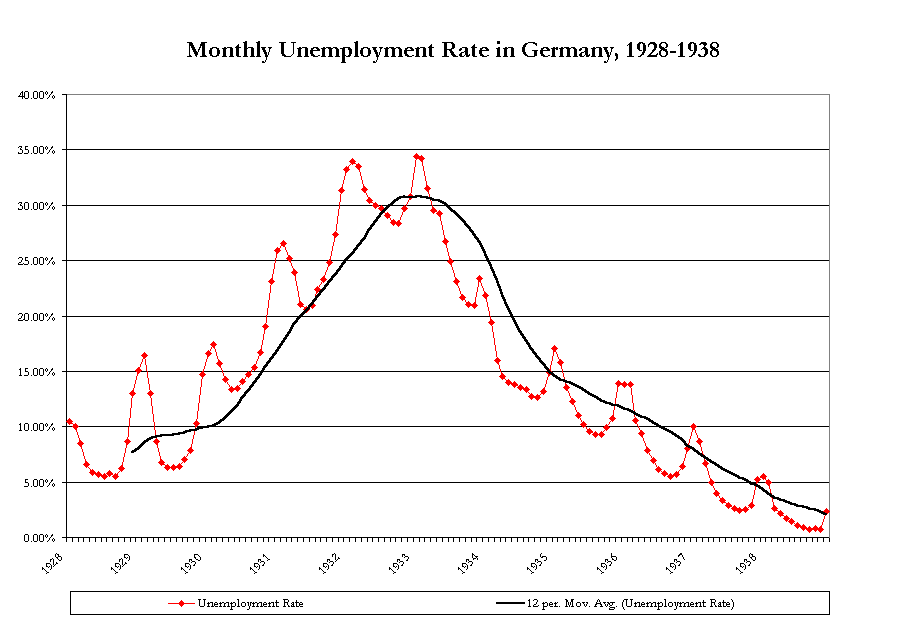
Source: Statistische Beilage zum Reichsarbeitsblatt, 1928-1939; reprinted in Dan P. Silverman, Hitler's Economy: Nazi Work Creation Programs, 1933-1936 (Cambridge: Harvard University Press, 1998), 249-253.
This graph shows fluctuations in the unemployment rate in Germany during the decade between January 1928 to December 1938. The show both the devastation caused by the Great Depression--an increase of unemployment to nearly 35%--then a steady decline after 1933. But we must be careful with such figures. While there is no evidence that Germany's official statisticians deliberately falsified the data, there is no question that the authorities manipulated the data to cast it in the most favorable light possible. Beginning in July 1933, for example, official statisticians began classifying people in enrolled in various job-creation programs among the "employed," including workers in the Voluntary Labor Service (a Weimar hold-over), emergency relief workers, and public relief workers. "By the simple stroke of a pen," Dan Silverman notes, "the Nazis seemingly reduced the ranks of the 'unemployed' by 619,000." Thus official labor market statistics "provide neither an accurate account of the true number of unemployed and employed nor an entirely accurate indicator of the extent of labor market improvement or deterioration in any given month."[1]